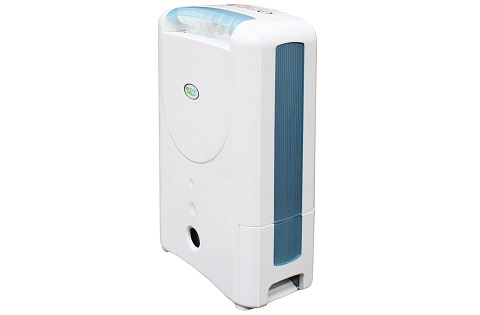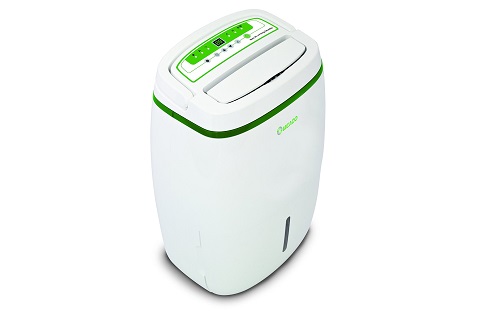No matter what region you call home on this expansive planet that we live on, maintaining optimum humidity levels is vital to a healthy environment. While low moisture content could lead to numerous skin and respiratory issues, this is just one side of the coin. Excess humidity can quickly turn your home or office into a hostile and inhospitable environment where dampness and harmful bacteria reign absolute.
When it comes to removing significant amounts of water vapour in the air, only the best of the best dehumidifiers are fit for the job. Here is our selection and reviews of top air dehumidifiers on the market.
Best Air Dehumidifier – Our Top Picks

- Product
- Type
- Weight
- Size
- Moisture Removal
- Water Tank
- Noise Level
- Our Review
- Our Rating
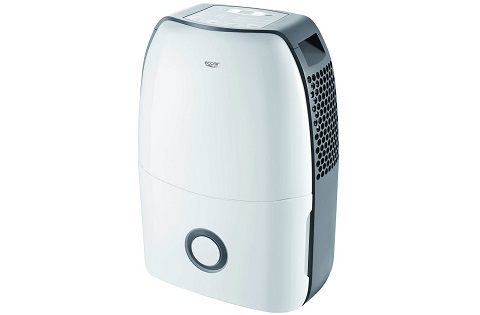
EcoAir
DC18- Compressor
- 13.5kg
- 27 x 39.6 x 52 cm
- 18 L/day
- 3.5 L
- 43 dB
- 4.7
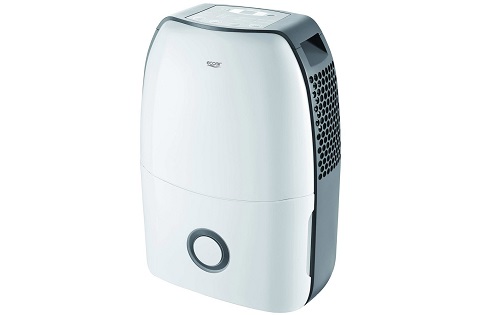
EcoAir
DC12- Compressor
- 10.5kg
- 22.5 x 49.6 x 35.3 cm
- 12 L/day
- 3.5 L
- 41 dB
- 4.7
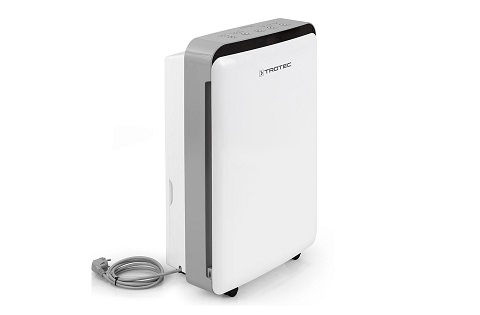
Trotec
TTK 69 E- Compressor
- 14kg
- 34.5 x 21 x 57.5 cm
- 20 L/day
- 4 L
- 43 dB
- 4.7
Let’s take a closer look at each of the air dehumidifiers now.
Air Dehumidifier Reviews – Our Top 10 Picks
1. EcoAir DD122FW-MK5 Classic Desiccant Dehumidifier
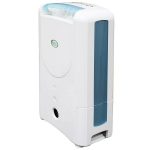 As EcoAir unwittingly continues setting the benchmark for today’s line up of desiccant dehumidifiers, the MK5 revives a popular and well-known classic.
As EcoAir unwittingly continues setting the benchmark for today’s line up of desiccant dehumidifiers, the MK5 revives a popular and well-known classic.
Never seeming to do anything wrong, EcoAir has simply perfected their formula in an effort to cut down waste and save on energy consumption. The Classic EcoAir DD122FW-MK5 comes with the typical white exterior with a blue lining that is easily recognised from far.
Even at very low temperatures, this bad boy promises superior moisture extraction like never before. However, it is for this same reason that customers complain of a burning smell due to overheating. Read our full review of EcoAir DD122FW-MK5.
2. EcoAir DC18 Compact Portable Dehumidifier
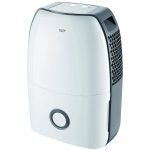 For the homeowner looking for something efficient and with an outstanding ability clear atmospheric water from a mid-sized house, the DC18 EcoAir Dehumidifier is worth a second glance.
For the homeowner looking for something efficient and with an outstanding ability clear atmospheric water from a mid-sized house, the DC18 EcoAir Dehumidifier is worth a second glance.
In addition to empowering your family with better quality of breathable air, this 18 litre per day capacity unit also offers a broad range of useful functions that allow you more control, flexibility and improved performance.
One small complaint, though; some customers claim that the EcoAir Compact Portable DC18 Dehumidifier tends to be a tad noisy at higher settings, but definitely not enough to wake you up. Read of full review of EcoAir DC18.
3. EcoAir DC12 Compact Portable Dehumidifier
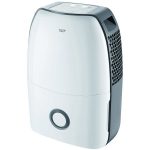 Introducing one of the most recent additions to the EcoAir refrigerant range, the DC12 EcoAir Compact Dehumidifier is as semi-compact, petite and as semi-portable as they come.
Introducing one of the most recent additions to the EcoAir refrigerant range, the DC12 EcoAir Compact Dehumidifier is as semi-compact, petite and as semi-portable as they come.
Like most people who can’t stand overly humid air, you’ve tried a myriad of ways to get rid of it. However, financial constraints can significantly limit your options. Well, with the EcoAir Compact Dehumidifier, you get all the harnessed quality and performance of a high-end dehumidifier in a much smaller and super affordable package.
But if it wasn’t asking too much, you think EcoAir might have indulged us with a little more than basic air filtration? Read our full review of EcoAir DC12.
4. EcoAir DD122 Simple Desiccant Dehumidifier
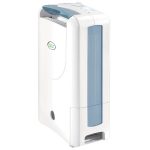 It is often said that great things come in small packages, and none is smaller than the 7 Litre per day extraction rate DD122.
It is often said that great things come in small packages, and none is smaller than the 7 Litre per day extraction rate DD122.
Against all odds i.e. UK’s cooler, damper environment, this award-winning dehumidifier has managed to retain the undisputed title of UK’s best selling dehumidifier.
Now, don’t get it twisted; the DD122 may not be nifty or ridden with the latest features, but that is exactly why it is ultra compact and competitively priced. Read our full review of EcoAir DD122.
5. TROTEC Dehumidifier TTK 69 E Dehumidifier
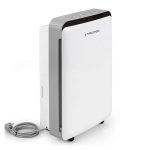 As always, there comes a time when you either go big or go home. With the beautifully designed, elegant and massive TROTEC TTK 69 E Dehumidifier, you get to do both.
As always, there comes a time when you either go big or go home. With the beautifully designed, elegant and massive TROTEC TTK 69 E Dehumidifier, you get to do both.
For those of you who haven’t laid eyes on this mammoth moisture monster, there’s only one thing you need to know – the TROTEC TTK 69 E Dehumidifier is one of the most comprehensive and well-rounded dehumidifiers on the current market.
With an astounding extraction rate of 20 litres a day, this bad boy clears the air and dries a full day’s worth of laundry in not time; just be prepared to part with a good amount of money. Read our full review of TROTEC Dehumidifier.
6. Meaco Platinum Low Energy Dehumidifier
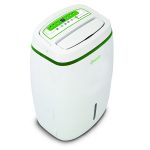 If you live in a massive house, work in a huge corner office and like to relax in your bid boy’s room, then you also need some hefty dehumidification to go with it. If we’re going big, then there’s nowhere else to look except Meaco.
If you live in a massive house, work in a huge corner office and like to relax in your bid boy’s room, then you also need some hefty dehumidification to go with it. If we’re going big, then there’s nowhere else to look except Meaco.
Towering above the rest at 59 by 38 by 29 centimetres, the Meaco Platinum Low Energy Dehumidifier is one of the largest units to ever combat excess humidity.
Combine a 20 litre a day extraction rate with a massive, 6-litre collection water tank and you’ve got a permanent, moisture sucking machine right in your home. Read our full review of Meaco Platinum Dehumidifier.
7. Meaco Portable Compact Dehumidifier DD8L
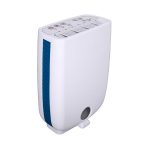 When it all boils down to raw power, seamless performance and surprisingly inconspicuous operation, Meaco seems to be aeons ahead of the competition. They have proven this time and time again and have the awards to back up their claims.
When it all boils down to raw power, seamless performance and surprisingly inconspicuous operation, Meaco seems to be aeons ahead of the competition. They have proven this time and time again and have the awards to back up their claims.
Introducing 2014’s WHICH Best Buy Dehumidifier, the DD8L Meaco Portable Compact Dehumidifier is the ideal companion in garages, boats, workshops and any other place where a portable dehumidifier might come in handy. The 8 litre a day extraction rate is complemented by a standard, 2-litre collection tank. However, the DD8L is a bit bulkier than similar units in its class. Read our full review of Meaco Portable Dehumidifier.
8. De’Longhi Compact Dehumidifier DEM10
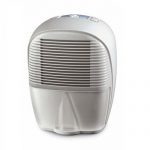 The De’Longhi Compact Dehumidifier DEM10 is a classic, jukebox looking dehumidifier that offers surprisingly compact dimensions and an easy grip, pull up handle for easy transportation.
The De’Longhi Compact Dehumidifier DEM10 is a classic, jukebox looking dehumidifier that offers surprisingly compact dimensions and an easy grip, pull up handle for easy transportation.
If you enjoy eye-catching aesthetics and do not like fiddling all day with your appliances just to get things right, then this is the model for you. It comes fully assembled straight out of the box.
But don’t be fooled by the petite size or humble nature, not for a second. The De’Longhi Compact Dehumidifier DEM10 has the ability to mow down over 10 litres of atmospheric water every day; making it the King of compromise. Read our full review of Delonghi Compact Dehumidifier.
9. De’Longhi DEX12 Dehumidifier
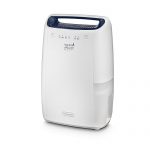 De’longhi DEX12 is a 2-in-1 dehumidifier and air purifier. But it’s mostly a dehumidifier that can extract up to 12 litres of water from indoor air a day. The water collection tank is fairly small at just 2.1 litres so you have to empty it often. Alternatively, use the provided hose to set up continuous drainage.
De’longhi DEX12 is a 2-in-1 dehumidifier and air purifier. But it’s mostly a dehumidifier that can extract up to 12 litres of water from indoor air a day. The water collection tank is fairly small at just 2.1 litres so you have to empty it often. Alternatively, use the provided hose to set up continuous drainage.
There are three dehumidification levels which you can select on the control panel (no remote). There is also a button for laundry mode which takes about 4 hours to completely dry an average load.
The air purification feature is only for dust and other larger allergens like pollen and pet hair. You can remove and wash the included dust filter.
Overall, it’s a great choice for anyone looking for a fast-working, reliable and affordable dehumidifier. Read our full review of Delonghi DEX12 Dehumidifier.
10. EcoAir Hybrid Dehumidifier/Air Purifier
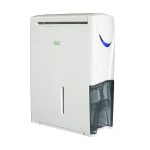 The Ecoair Hybrid will dehumidify and purify your indoor air.
The Ecoair Hybrid will dehumidify and purify your indoor air.
It uses a 20L dehumidifier to make your indoor air more comfortable and prevent mould and bacterial. A 3-in-1 filter captures allergens and filters odours and VOCs. There is also an ioniser that releases bacteria-killing negative ions and a fragrance box where you can add your own essential oil for some added fragrance in the air.
It has a conveniently large 4-litre tank but you can also install a drain pipe.
With the inbuilt humidistat, it ensures that your home is always comfortable while also saving energy. It only runs when necessary and reduces performance when the target humidity level has been reached. Read our full review of EcoAir Hybrid Dehumidifier.
Air dehumidifier buying guide
After witnessing firsthand just how hostile and destructive excessive humidity can be, most people can’t help but appreciate the need for a decent dehumidifier. Fortunately, the market has a lot to offer in terms of features and functionality.
If you have just begun your search for the ideal air dehumidifier, you no doubt have more questions than answers at this point. This comprehensive air dehumidifier buying guide aims at equipping you with all the information you need to choose the ideal moisture sucking machine.
Things to consider when buying a dehumidifier
1. Size and extraction rate
Dehumidifiers come in a broad range of different shapes and sizes. The larger and more powerful a dehumidifier is, the more atmospheric water it can collect on a daily basis. If your home or office is either small or located in areas where dampness is not much of an issue, then smaller capacity dehumidifiers with around 7 litres a day extraction rate will do fine.
However, experts advise that no matter how much or how little space you have in your home, always try to buy the largest dehumidifier that your budget will allow. Going for units with over 20 litres a day extraction rates ensures faster moisture removal and some exciting features.
2. Energy efficiency
Dehumidifiers are typically rated from A to G according to their energy efficiency. If your unit is rated A, this means that it is among the most energy efficient models currently available in the market. Subsequently, A rated dehumidifiers use substantially less electricity to run than G-rated models.
You can choose to go for any rating you want, but the more energy efficient the unit is, the lower your runic costs will be. But do keep in mind that even if your particular dehumidifier does not come with an energy star rating, it doesn’t mean that is bad for the electricity.
Sometimes, industrial and commercial manufacturers just don’t need to spend all that money going through the approval process just to find out what they already know.
3. Noise factor
This is one of the most important factors that one cannot afford to overlook when buying a dehumidifier; especially if you are planning on using it when people are around such as in the bedroom, office, living room or any other populated area.
No matter what type of dehumidifier you have, they all use a fan that tends to make some noise. However, it is that compressor that will determine just how tolerable the noise levels are. Some of them vibrate quite vigorously while others hum gently and almost inaudible.
Generally, you want to keep things as quiet as possible. However, if noise is not an issue for you (maybe you plan to install the unit is a basement), then you should have no problem choosing a dehumidifier.
4. Water disposal method
Pay close attention here shoppers, because this is the feature that will determine if you will be making endless trips to the sink or doing nothing at all. While the average dehumidifier will always come with a sizeable collection tank, the extraction rate per day will always outmatch the reservoir capacity.
For example, most dehumidifiers with an extraction rate of 20 litres a day have a collection tank sized anywhere between 2 to 8 litres. This means that if you live in a very damp area, you might need to empty the massive tank every few hours.
Alternatively, you could avoid all the hassle and go for a more permanent solution. This involves connecting a continuous drain hose and utilising the power of gravity to draining the water to a floor drain or even directly outside.
Main types of air dehumidifiers
Refrigerant or compressor dehumidifiers
These are the oldest types of dehumidifiers that operate in a similar fashion to tour fridge. A typical refrigerant unit features fans to draw in air and a metal cooling plate for condensation inside the unit. As damp and humid air is drawn in the dehumidifier, it hits the metal plate and cools, then drips down to the tank below.
After this, the air is then circulated in the room, repeating the cycle over and over until the humidity reaches desired and safer levels. These units have a limitation in that they only work well at room temperature.
Desiccant dehumidifiers
Desiccant dehumidifiers, on the other hand, utilise a type of desiccant material to absorb all atmospheric water from the air. While powered, the unit draws moisture packed air inside and passes it through the desiccant material. The material absorbs the water vapour, after which a warm stream of air is used to release the moisture to the tank below. Desiccant dehumidifiers are not only much quieter than refrigerant, but they are also lighter and smaller too.
How to use an air dehumidifier
Operation
Immediately after purchasing your brand new dehumidifier, it is important to follow all instructions when setting it up. Some models require assembly while others are ready to go straight out of the box.
For the first run, it is recommended that you run the dehumidifier at the highest settings possible for a couple of hours. Not only will this test out the model’s capabilities, but it will also stabilise the room’s humidity to safer levels.
Allow the dehumidifier to run for a couple of cycles and the switch it to automatic function if it has one.
Also, remember to only use certain dehumidifiers in cooler weather. Once temperatures start to drop, most dehumidifiers tend to build up frost on the machine’s coil and damage it’s efficiency. Some models are specially made for much cooler areas like the UK.
Positioning
One of the most common mistakes that people make is to place their dehumidifiers in tight corners and in contact with the wall. This should only apply if your unit has a top-mounted air discharge. If not, you need to make sure there is enough air circulating the unit.
The better the circulation, the more efficient the machine is. For more efficiency, position your dehumidifier in the most humid room with all doors and windows closed.
Remember, dust is a dehumidifier’s worst enemy. It can lead to clogged filters and reduced performance; make sure you avoid dust sources at all cost.
Cleaning and maintenance
Before carrying out any cleaning and maintenance, make sure your unit is unplugged and turned off. Start by removing and cleaning the water reservoir tank with mild dishwashing liquid and warm water. T
he tank is the most vulnerable part for bacteria build up, try to clean it at least twice a month or more where possible. The air filter should also be checked on once or twice a year to ensure it is in excellent working condition.
If it needs cleaning or repair, make sure you get around to that as soon as possible to continue enjoying a fresh, healthy and damp-free environment.
Frequently Asked Questions
Q: Why is my dehumidifier blowing hot air?
A: A dehumidifier works by drawing in air and running it across coils which cool and condense the moisture. This air is then heated and removed as exhaust back into the room. As such, all dehumidifiers naturally produce some level of heat.
This heat will radiate at a constant rate as the unit circulates the air to lower the humidity. If your dehumidifier also blows out cold air, then that’s an air conditioner. Both of these appliances work exactly in the same way; except air conditioners release the hot air outside circulating the cool air back in the room.
Q: What is the difference between a dehumidifier and an air conditioner?
A: In essence, an air conditioner is quite similar to a dehumidifier. They both use different mechanisms to achieve the same result. Depending on the appliance, both dehumidifiers and air conditioners circulate air through a refrigerant.
The major difference is where the heat is expelled. Air conditioners have a fan system that circulates cool air while dumping hot air through a dedicated exhaust system. Dehumidifiers on the other hand could care less about your overheated brain. They just dump the hot air back into the room, with substantially less moisture.
Q: How do you remove moisture from the air without a dehumidifier?
A: There are many ways to remove moisture from your home. However, they depend on the cause of humidity, your home’s features and of course, budget. An easy way to achieve this is by opening your windows. Good ventilation reduces condensation in the room. You can also add a fan to keep the air moving along. As long as the air outside is less humid that inside, then air movement is usually enough to manage the humidity.
Apart from air movement, you can also absorb the moisture. Use desiccants such as salt crystals, calcium chloride and others to absorb excess moisture. Another option is to dry he air by using space heaters, chimney fires or a woodstove. Warming the air reduces humidity levels by evaporating excess water in the atmosphere.
Q: Why is it important to change air filters on desiccant dehumidifier?
A: Dehumidifiers have air filters which remove dust and contaminants from the air before passing it through the coils. This helps protect the coils from damage, wear and tear. Overtime, the air filters collect a buildup of dust and debris. If left dirty, the filter will affect the efficiency of your unit and quality of air produced.
However, you still need to replace your air filters after a while. This especially applies to people who live in extremely humid or dusty areas. After long periods of use, bacteria and mold will breed on the filter even after cleaning it. Needless to say, this can become hazardous to you and your family’s health. Always replace your humidifiers air filters before they get to this point.


